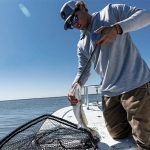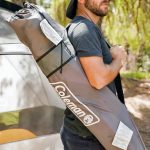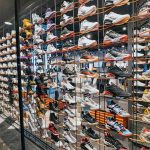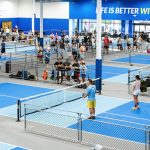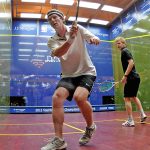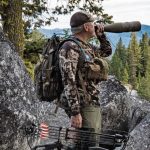Hibbett Sporting Goods expects to become more important to a number of vendors this year as they consolidate the business in the hardlines area to do more business with fewer brands.
The “small-town operator” hopes to see improved discounts with their vendors as a result. In footwear, Nike appears to be getting a larger piece of the growing pie and made up 35% of their business in 2003. HIBB expects it to be “a little bit stronger this year”.
The Nike growth is reportedly coming at the expense of adidas and New Balance.
Hibbett also sees higher price-points across all categories, but especially in hardgoods where they are continuing to sell more higher-end bats and gloves.
Hibbett saw net income for the fourth quarter increase 41.3% to $6.5 million, or 41 cents per share, from $4.6, or 30 cents per share, in the year-ago quarter. Earnings per diluted share increased 36.7% for the period and would have jumped 46.4% when excluding a two cent charge for leasehold improvements in the year-ago period. Net sales for the quarter increased 20.8% to $91.2 million compared with $75.5 million for Q4 last year. Comparable store sales increased 8.3% in the fourth quarter.
The season ended with a bang as January appears to be getting “stronger and stronger”, according to Mickey Newsome, chairman, president and CEO. January comps were up in the “14% range” on top of double-digit gains the last two years. December was up in “mid single-digits” and November was up in the “8% range”.
HIBB said apparel, led by licensed products, posted a “double-digit” comparable sales increase. The Active Apparel business was again driven by Under Armour and Nike Dri Fit product and Nike fleece hoodies. Womens apparel was up “high double-digits”, led by Nike and private label.
The Licensed Apparel college business was up “high single-digits” with Womens and Youth growing in “high double-digits”. Nike on-field apparel “led the way at full-price”. The pro sports Licensed Apparel business was up in “high double-digits”, led by jerseys from Michael Vick, LeBron James and Carmelo Anthony. HIBB also saw retro NBA jerseys, led by Celtics, 76ers and Lakers, performing well at the $60 to $70 price-point.
Footwear, driven by Womens and Performance, was up “mid to high single digits”. Nike Shox was a key contributor here. Retro and Classics were also said to be “hot” with New Balance, Reebok, K-Swiss and Nike LEs all performing well. Mens and Kids cleats were up in “mid single-digits”.
In hardlines, Basketball “led the way”, increasing in “high double-digits”. Inflatables and basketball backboards from Lifetime were said to be “the big winners”.
Mr. Newsome sees the momentum continuing into the current fiscal first quarter with Footwear, Apparel and Hardlines all up in the “mid to high single-digit range” and overall comps up at the same rate.
In other news at Hibbett, Mickey Newsome has added the Chairman of the Board title to his duties, replacing John F. Megrue, Jr., who is retiring from the Board, effective immediately. Mr. Megrue had been Chairman since 1995, when Saunders, Karp & Megrue, L.P. acquired a controlling interest in Hibbett. The company plans to fill the vacant seat.
In discussing the opportunity associated with the Footstar closure of Just for Feet and Footaction stores, the newly-minted chairman said the JFF stores are “larger than we like to look at”, but there was “probably three or four” they might consider. He felt the Footaction stores might present a “better opportunity” since the square footage matches up better with Hibbetts current footprint.
Hibbett opened 24 new stores during Q4, bringing the store base to 428 stores. They expect to open approximately 65 new stores, net of store closings, in fiscal 2005.
Earnings per diluted share for the current fiscal year are forecast in the $1.52 to $1.56 per share range on a 4% to 5% same-store sales gain. Mr. Newsome said it is “prudent to expect” that second half comparable sales results will be closer to HIBBs “historical range of 3% to 4%”. HIBB expects to see diluted EPS of 45 cents to 47 cents in the current fiscal Q1 on a 5% to 6% comparable store sales increase.








